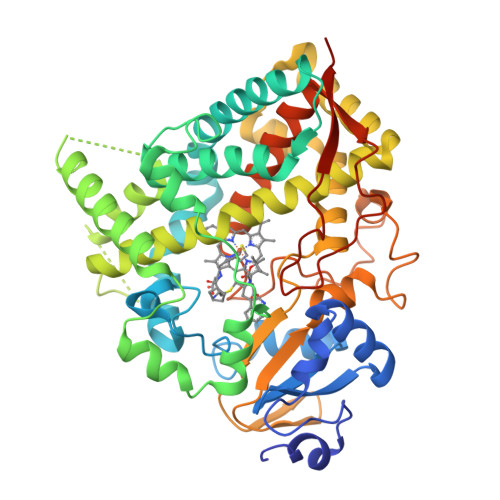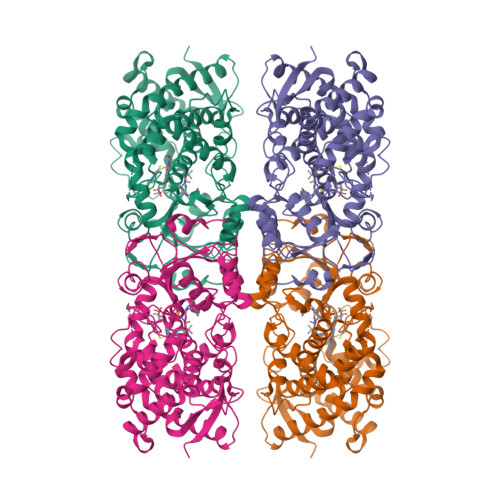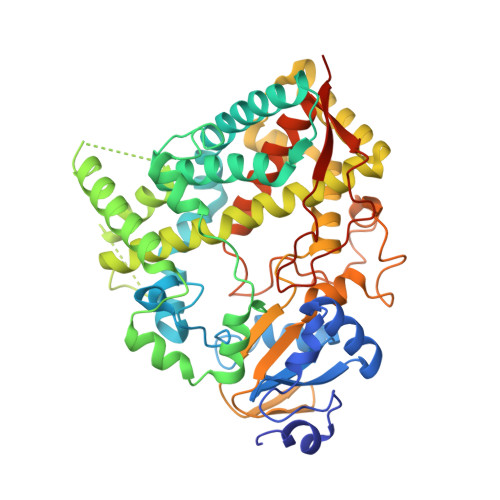Inhibition of Human CYP3A4 by Rationally Designed Ritonavir-Like Compounds: Impact and Interplay of the Side Group Functionalities.
Samuels, E.R., Sevrioukova, I.(2018) Mol Pharm 15: 279-288
- PubMed: 29232137
- DOI: https://doi.org/10.1021/acs.molpharmaceut.7b00957
- Primary Citation of Related Structures:
6BCZ, 6BD5, 6BD6, 6BDK - PubMed Abstract:
Structure-function relationships of nine rationally designed ritonavir-like compounds were investigated to better understand the ligand binding and inhibitory mechanism in human drug-metabolizing cytochrome P450 3A4 (CYP3A4). The analogs had a similar backbone and pyridine and tert-butyloxycarbonyl (Boc) as the heme-ligating and terminal groups, respectively. N-Isopropyl, N-cyclopentyl, or N-phenyl were the R 1 -side group substituents alone (compounds 5a-c) or in combination with phenyl or indole at the R 2 position (8a-c and 8d-f subseries, respectively). Our experimental and structural data indicate that (i) for all analogs, a decrease in the dissociation constant (K s ) coincides with a decrease in IC 50 , but no relation with other derived parameters is observed; (ii) an increase in the R 1 volume, hydrophobicity, and aromaticity markedly lowers K s and IC 50 , whereas the addition of aromatic R 2 has a more pronounced positive effect on the inhibitory potency than the binding strength; (iii) the ligands' association mode is strongly influenced by the mutually dependent R 1 -R 2 interplay, but the R 1 -mediated interactions are dominant and define the overall conformation in the active site; (iv) formation of a strong H-bond with Ser119 is a prerequisite for potent CYP3A4 inhibition; and (v) the strongest inhibitor in the series, the R 1 -phenyl/R 2 -indole containing 8f (K s and IC 50 of 0.08 and 0.43 μM, respectively), is still less potent than ritonavir, even under conditions that prevent the mechanism based inactivation of CYP3A4. Crystallographic data were essential for better understanding and interpretation of the experimental results, and suggested how the inhibitor design could be further optimized.
Organizational Affiliation:
Departments of Pharmaceutical Sciences and ‡Molecular Biology and Biochemistry, University of California , Irvine, California 92697-3900, United States.


















